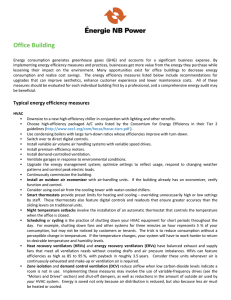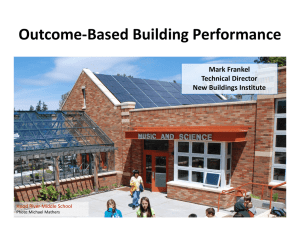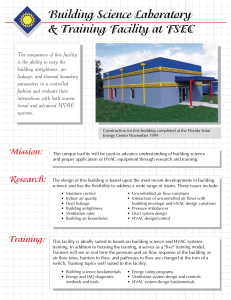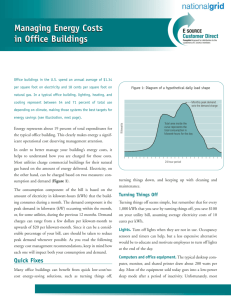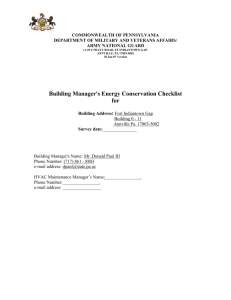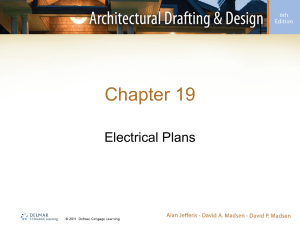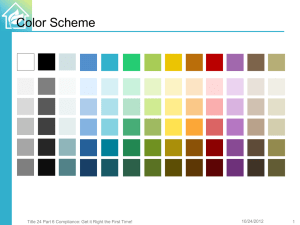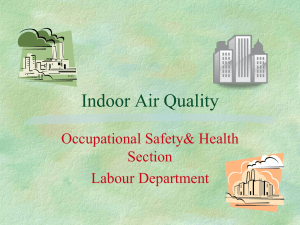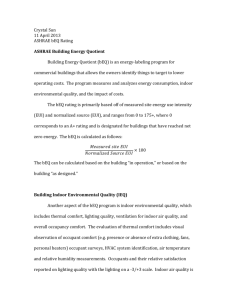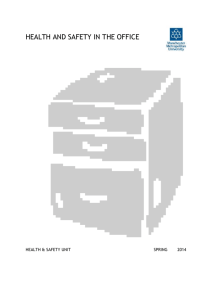What`s new in Building Automation Systems
advertisement
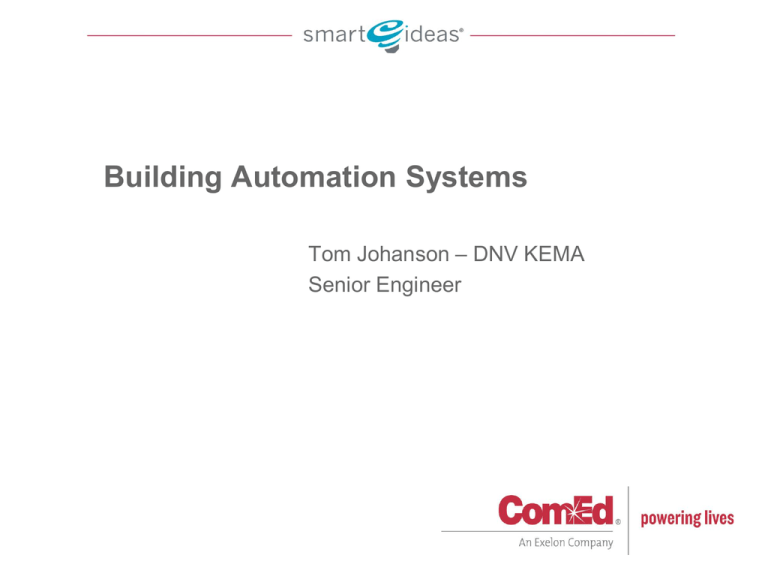
Building Automation Systems Tom Johanson – DNV KEMA Senior Engineer Agenda Top 10 – What’s new in Building Automation Systems Benefits of Energy Management Systems ComEd Rebates for EMS Top 10 – What’s new in Building Automation Systems #1: Anytime and anywhere access “Cloud” services Mobile to go applications – smart phones iPad applications Alerts and alarms for building system operation #2: Building performance System data collection, archiving and reporting Realtime tracking and managing energy usage Energy and carbon management Utility bill management #3: System optimization Continuous commissioning Automatic fault detection Identification of new measures to reduce energy use Brand names: • • • • JCI: Panoptix Honeywell: Attune Enernoc: Efficiency Smart Utilivisor #4: Integration of systems Building systems: • • • • HVAC Lighting Security Life safety HVAC systems: • Building occupant zones – lights, temperature, ventilation, occupancy • Air handlers • Chillers Enterprise – IP Network #5: Chiller plant optimization Selects the most efficient configuration of chillers, pumps and towers to meet the load Brand names: • Siemens: Demand Flow • JCI: Central Plant Optimization #6: Wireless control Wireless sensors Wireless controllers Wireless mesh network Easier install for retrofit More sensors for better control and integration #7: Demand control ventilation Adjust the amount of ventilation air based on room occupants (CO2 sensors) Most beneficial in large areas that have significant times of low occupancy Enclosed parking garage – CO sensors #8: Intelligent lighting control Occupancy sensor at each fixture Wireless control of fixture Dimmable fixture to adjust for daylighting or occupant profiles Warehouse application: • • • • LED lighting Shorter cycle times such as 10 seconds Tune light levels Achieve greater than 95% reduction #9: Smart Grid integration Smart grid requires smart buildings Pre-defined profiles that reduce load based on a signal #10: Net Zero Energy buildings Next challenge ahead Complex controls required Integration of many systems Need to react to precise needs of building Benefits of Energy Management Systems A Computer-Based System That ... Controls and monitors HVAC and lighting systems Monitors, tracks and reports energy use Helps maintain a safe environment including access security and fire safety Supports HVAC and lighting systems maintenance Provides key information for new industry standards Why Do You Need an EMS? Maintain occupant comfort and safety Monitor and reduce energy usage Maintain automatic and consistent reaction to events (alarms) Gather and view building information quickly Obtain diagnostics of HVAC and lighting equipment for predictive maintenance Communicate corporate sustainability goals EMS – Other Benefits Verification that schedule, space temperature and other primary control strategies are working Easy adaptation to special conditions (such as temperatures and schedules) Remote trouble-shooting Anticipation of complaints Email or mobile device notification of alarms Complex, multi-input, advanced control strategies Data trending for optimization Energy Performance Indicator (EPI) reporting EMS Common Strategies Time scheduling Night set-back or set-up Lockouts Resets Diagnostics SIFYB Building Automation Projects 527 projects 43.5 GWh saved Average annual savings of about $8,000 per project Any health care specific examples? Healthcare: Issues Supply air change rates Outdoor air requirements Humidification and dehumidification Simultaneous heating and cooling – high reheating requirements 24/7 operation Interoperability with other systems Multi-building campuses Central chiller/boiler plant Healthcare: Strategies Centralized operation Reduce code required minimum Outside Air requirements during unoccupied periods Reduce air flow to minimum space ventilation during unoccupied periods Lower set point during unoccupied periods Chilled water/condenser water/hot water temperature set point and reset Supply air temperature, pressure set point and reset Economizer controls © 2012 Commonwealth Edison Company ComEd Rebates for EMS New standard measures Building energy management system (less than 120,000 square foot) • $0.20 per square foot of conditioned space Demand controlled ventilation: conditioned space • $30 per 1,000 square feet Demand controlled ventilation: parking garage • Remains as custom incentive through PY5 Air side economizer • $40 per ton Custom Incentives for PY5 Incentive rate is 7 cents/kWh saved Early commitment option • For projects that save more than 500,000 kWh • Incentive of 6 cents/kWh saved committed to at approval of pre-application • Separate and more detailed application Thank you!
